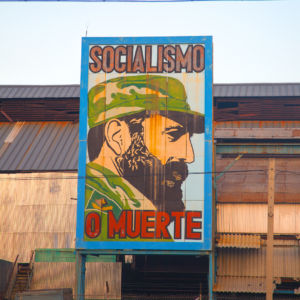Editor’s Note: For an alternative viewpoint, please see: Point: Castro’s Survival Plan May Be Crumbling
A historic transition is fast approaching in Cuba. On April 19, 2018, for the first time in 60 years, a Castro is slated to step down and a new leader to take the helm. Though this presidential transition will symbolize a passing of the torch to a new generation, it is unlikely to yield major changes to Cuba’s internal politics or foreign policy.
A transformation of its economy to a more open and outward looking model is more probable, but unlikely to happen until much further into the future — a result of the National Assembly and domestic politics, and less on the president’s influence.
Miguel Diaz-Canel, vice president of the Council of the State, is most likely to step up to the presidency in April. Although a supposedly moderate politician who will represent a new perspective separate from the “old guard,” Diaz-Canel is unexpected to be the beacon for change some hope for, but rather the promise of continuity.
Raul Castro first announced his intentions to step down as president of Cuba in 2013, four years after succeeding his brother in 2008 and after serving two five-year terms. If and when he does so in April, he will relinquish some of his visibility and his post as commander in chief of Cuba’s armed forces, per the constitution. This, however, will not mean less influence on the goings-on in government and the country.
He is likely to remain the head of the Communist Party and a formidable political figure, as symbolized by his selection on January 21 to be a candidate for the National Assembly from the Segundo Frente municipality in Santiago de Cuba.
But whether or not a leadership transition comes with changes on the political front, where we may see some change — at least in the long term — is on the economic front. Here, a younger generation of entrepreneurs will play a part.
When Castro first took power, Cuba was stuck importing nearly 80 percent of its food, and Cubans were scraping by with salaries barely able to cover even the most basic of necessities. Though the economy turned after the enactment of new policies that promised an opening for private enterprise and cooperatives through decentralization and more foreign investment, today the economy again finds itself on the way down.
Reforms have stalled, the government has halted the issuance of new licenses in some work categories, and the situation in Venezuela has sharply affected Cuba’s access to oil. And after the U.S. government’s issuance of stricter restrictions on U.S. commercial interactions and tourism to the island, Cuban entrepreneurs are already feeling the belt tighten.
To turn Cuba’s economy around, a leadership transition in April will have to pave the way for a greater opening to foreign investment, a streamlining of processes for proposals, new openings for the private sector, less stringent regulations, and a more efficient tax system. In the long run, if the government can devalue the official exchange rate and adjust pricing systems, we may even see a unification of the dual-currency system, a promise that has hung in the air for a long while.
So, though likely not overnight, change may still be on the horizon for Cuba. April 19 is a beginning. It is a symbolic break from Castros at the forefront of Cuba’s political and economic outlook. Don’t expect warm relations with the Trump administration, but those in the Cuban-American community — and some in the Congress — may feel a weight has been lifted, despite controversial comments by Diaz-Canel vis-a-vis the United States late last year.
In the end, although the next president is unlikely to take Cuba in an entirely new direction politically, we may see a new economic opening in the long run. The next generation will certainly continue to play a part, with cuentapropistas and an innovative private sector at the helm. With this transition, a new, albeit probably narrow, path for Cuba may appear.

